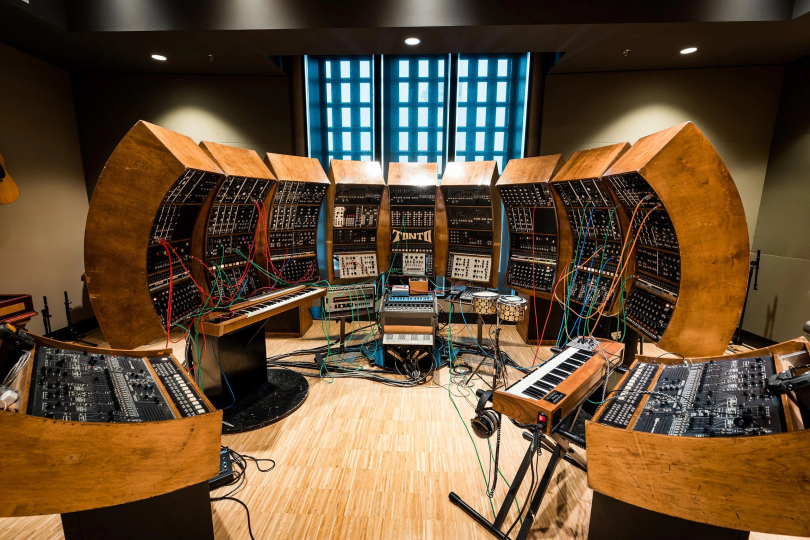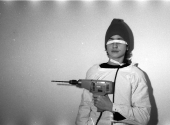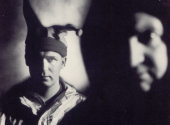
Milestones in Music History #53: Tonto's Expanding Head Band, New Synths, New Sounds
The astonishing, avant-garde, theatrical and musical thrust of The Crazy World of Arthur Brown, featured in our previous episode, marked a turning point in the way musicians performed and the importance of staging in music. But also in the same years, there was a need for a revolution in instrumentation and sound, a new way of conceiving electronics and an original approach to musical synthesis. And that is why Tonto's Expanding Head Band came to the rescue.
What is the first thing that comes to your mind when talking about the music of the 70s? Psychedelia? Prog Rock? Hippies and freaks on the streets demonstrating against the war, while others isolate themselves. What about the the rant (which never really existed) Beatles vs The Rolling Stones? The 1970s were all that, and more.
While the world was changing profoundly, there was a need for a new and disruptive approach to music, which also needed to breathe new air. Although many bands had arrived in the late 1960s to bring a new breath to rock and pop music, they lacked the essential tools to carry out that revolution effectively.
It all started with a Moog. In 1968, Robert Margouleff, who had already been approaching the world of synthesizers for a few years and had started experimenting with analogue electronic instrumentation, bought a Moog Series IIIc. At the time it represented a real revolution in synthesis, almost like having an entire orchestra at his disposal.
Not long after purchasing the synthesizer, Robert met Malcolm Cecil. Cecil was a portentous jazz bassist who had founded a jazz quintet called the Jazz Couriers in the late 1950s and had subsequently been an active participant in the British jazz scene playing with musicians such as Ronnie Scott and Tony Crombie until the early 1960s.
He later formed Blues Incorporated together with Alexis Korner, considered the putative father of the British blues, and Cyril Davies, who was one of the UK's most talented harmonica players. It was only then that his destiny met Margouleff's. They both began to devote themselves to modulation, starting with the Moog Series IIIc that Robert, one of Mr Moog's very first buyers, had purchased a few years earlier.
They then added another Series IIIc, two ARP 2600s, four Oberheim brand SEMs, and additional synths such as EMS, Roland and Yamaha. An interesting and important addition was the modules of the Russian composer and electronic instrument maker Serge Tcherepnin, famous for inventing the Serge Modular Music System, a modular synth that was designed by him in 1972 at CalArts (where he worked as an instructor under Morton Subotnick) and put on the market in 1974.
The modules used by Serge had been built together with Cecil, who had engineering knowledge from his previous job with the Royal Air Force. But Cecil was intrigued and interested in the use of the Moog, and for that reason, he approached Margouleff; in return, Cecil taught him how to use the recording console.
It took only two weeks for the two of them to build the largest and most amazing synthesizer on the face of the earth. Thus, was born TONTO, an acronym for "The Original New Timbral Orchestra". A prodigious instrument. Not one, but multiple instruments intertwined to form orchestral symphonies. All with the sole use of the four limbs.
According to Cecil, he intended to create a polyphonic multitimbral synth, so that each note had a distinct tonal quality, as if the notes were derived from different musical instruments. What can we say? It was a stroke of genius. A few weeks after the creation of the prodigious TONTO, the duo teamed up to form a band, TONTO's Expanding Head Band.
It was a musical act based on experiments with the synth of their creation, and shortly after that in 1971, they released their first album, Zero Time. It attracted the attention of many artists who followed the potential of new technologies in electronic music, introduced by TONTO and the duo's music.
Almost immediately after the album's release, the duo began working with Stevie Wonder – as engineers, synth programmers and associated producers – on a slew of highly acclaimed and award-winning albums, Music of My Mind (1972), Talking Book (1972) and Innervisions (1973). Fulfillingness' First Finale (1974) was the last of their collaborative career, as relations between the duo and Stevie Wonder soured.
Also in 1974, TONTO was used by Brian de Palma in his film Phantom of the Paradise, but soon Cecil and Margouleff began using TONTO for themselves again. Thus in 1975 their second and last studio album It's About Time was released, which once again showed how their creative ability, combined with the formidable peculiarities of the synth they created, generated something destined to remain in history.
But in the same year, after the duo collaborated on Billy Preston's album It's My Pleasure, Cecil acquired Margouleff's shares and took ownership of TONTO. The duo continued to collaborate – as a couple and individually – with numerous other artists, including Bobby Womack, Joan Baez, Depeche Mode, the Isley Brothers, Quincy Jones, Oingo Boingo and many others. However, Tonto's Expanding Head Band's adventure had reached its end.
Even though the duo was over, TONTO continued to exist in its own right. Gil Scott-Heron and keyboardist Brian Jackson used the synth in the production of their album 1980, and TONTO appeared with them on the album cover. In 2013 Cecil sold TONTO to the National Music Centre in Calgary, where it was on display when he died, in 2021. TONTO has been restored and can still be played.
The creative genius of Malcolm Cecil and the technical knowledge of Robert Margouleff conceived something never thought of before, which changed the world of synthetic electronic and experimental music forever. Although TONTO can now be defined as surpassed by more agile and practical technological systems, it remains and will always remain a piece of modern-day music history.
The revolution triggered by Cecil and Margouleff can be compared to another that was carried out in England in the 1950s and would lead to the birth of British pop. We are talking about none other than the famous King of Skiffle, Lonnie Donegan, the protagonist of our next episode of Milestones.
What are the potentials of modulation today? Does the use of analogue synths still make sense? How has the approach to timbral polyphony changed? And who are TONTO's natural descendants?
Leave your opinion in the comments below!
If you have found an error or typo in the article, please let us know by e-mail info@insounder.org.





